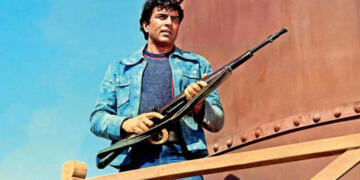Taarak Mehta Ka Ooltah Chashmah controversy: Wisdom is something that you gain in the most unconventional ways. Sometimes, just a random conversation brings out the best of mankind. But sometimes, it takes a disaster to know that the faces might be different, but the message is same. Sorry, short mein kahein to I wasted 700 rupees to find out that Dominic Toretto is just a sophisticated Jethalal Gada, dragging a deadweight of a franchise all by himself.
From the pinnacle to glory to
In the vast landscape of entertainment, certain franchises or serials capture the public’s attention and become cultural phenomena. The Fast and the Furious, a high-octane action film franchise, and Taarak Mehta ka Ooltah Chashmah, a beloved Indian sitcom, are prime examples of such successes. While these projects once soared to great heights of popularity, both now face challenges, particularly in terms of creative stagnation. It is intriguing to observe how these seemingly disparate worlds converge and highlight the ongoing struggle of sustaining originality and meaningful storytelling in today’s entertainment industry. Well learn about the ongoing Taarak Mehta Ka Ooltah Chashmah controversy in this today’s article.
The Fast and the Furious franchise burst onto the scene in 2001, bringing fast cars, adrenaline-pumping action, and an ensemble cast that resonated with audiences worldwide. What started as a humble street racing film transformed into a global phenomenon that captivated fans with its high-speed stunts, charismatic characters, and themes of family and loyalty. With each installment, the franchise gained momentum, amassing an enormous fan base eagerly awaiting the next installment.
Likewise, Taarak Mehta ka Ooltah Chashmah became a household name in India. Premiering in 2008, and based on columnist Taarak Mehta’s “Duniya ne Oondha Chashmah”, the sitcom based on a popular comic strip offered light-hearted comedy, relatable characters, and wholesome family entertainment. Its depiction of the lives of residents in a Mumbai housing society struck a chord with viewers, leading to widespread popularity. The show’s humor, strong moral values, and vibrant cast made it a fan favorite, ensuring its longevity for over a decade, both in forms of snippets and memes.
Also read: Delving into Cinematic Brilliance: Exploring the TOP 10 Best Julianne Moore Movies
Where and why they failed
Despite their initial success, both The Fast and the Furious and Taarak Mehta ka Ooltah Chashmah face notable challenges and controversy, particularly in the realm of creativity. The Fast and the Furious franchise, which currently boasts nine films and various spin-offs, has encountered criticism for its shift from street racing and heists to increasingly over-the-top action sequences and a focus on spectacle rather than coherent storytelling. With each new installment, the boundaries of plausibility are pushed, leading to a sense of creative exhaustion among fans. The latest addition, Fast X, has only made it worse, and makes even projects like “Kisi ka Bhai Kisi Ka Jaan” look heavenly.
Similarly, Taarak Mehta ka Ooltah Chashmah, while maintaining its popularity, has faced accusations of repetitive storylines and reliance on clichés. Many viewers argue that the show has become predictable, with limited character development and a lack of fresh narratives. The sitcom’s tendency to recycle jokes and rely on stereotypical humor has led to concerns about the diminishing creative value and impact on its once-devoted fan base. Probably that’s why the actors that once graced the show, and made people chuckle with their simple one liners, are now leaving this show one by one.
The Endless Cycle
Now you might be wondering, how are these projects similar? The parallel between The Fast and the Furious and Taarak Mehta ka Ooltah Chashmah lies in the seemingly never-ending nature of their respective creative challenges. Despite criticism and calls for change, both serials have managed to maintain their popularity and generate significant revenue. This success, however, can inadvertently contribute to complacency and a reluctance to deviate from established formulas. In an industry driven by profit and market demands, it becomes increasingly difficult to break away from the predictable and embrace fresh, innovative ideas.
Also read: Pro-Hindu subject and lesser-known stars is working. It’s time for BWood A-listers
In an era where entertainment is often driven by financial considerations, the pressures to meet audience expectations and generate revenue can hinder creative risks and hinder the pursuit of innovative narratives. To break free from this cycle, it is crucial for creators and producers to embrace fresh perspectives, foster creative freedom, and prioritize storytelling over repetitive formulas. Only then can these serials and franchises evolve to captivate audiences once again and prove that an end to the “nonsense” is possible. Till then, it’s crap. Deal with it.
Support TFI:
Support us to strengthen the ‘Right’ ideology of cultural nationalism by purchasing the best quality garments from TFI-STORE.COM


































